by François Lique & Amélie Godard Palluet & Antonios Papaioannou & Francesca Tonolo & Guillaume Raffy & Michał Żółtowski & Alexandre Faure & Paul Pirlot Jankowiak & Sándor Demes & Shan Gao, on
Presentation of the workshop

From the 9th to the 12th of June 2025, the workshop on Physical and Chemical processes of astrophysical interest was taking place in Saint-Florent (Corsica). It was organized by F. Lique, J. Loreau and A. Faure.
In this workshop, astronomers, theoreticians and experimentalists exchanged about recent achievements and discussed the new challenges addressed in observations, modeling and laboratory astrophysics in the JWST era.
During this workshop, A. Godard Palluet, A. Papaioannou, F. Tonolo, G. Raffy, M. Żółtowski, P. Pirlot Jankowiak, S. Demes, and S. Gao from the COLLEXISM team presented their work.
Collisional rate coefficients for chloronium cation with non-LTE analysis of its interstellar emission lines - S. Demes , D. Kędziera, A. Faure, and F. Lique
Recent astronomical observations [1,2] have shown that chloronium (H2Cl+) is an important intermediate in Cl-chemistry of the ISM. The correct interpretation of interstellar molecular observations requires a complex astrophysical analysis taking into account non-local thermodynamic equilibrium (non-LTE) conditions of the media, which in turn requires appropriate state-to-state collisional rate coefficients, which have been lacking in the literature for chloronium.
The first accurate interaction potential between H2Cl+ and H2 has been recently calculated, allowing to study the rotational excitation of chloronium using the accurate close coupling quantum scattering theory [3]. State-to-state rotational (de-)excitation cross sections and thermal rate coefficients have been calculated, involving the lowest 21 rotational states of both the ortho and para nuclear spin species of H2Cl+. The thermal rate coefficients cover a range of kinetic temperatures from 10 to 200 K. The results show a very significant deviation from the collisional data calculated in the case of excitation due to He impact [4]. Astrophysical simulations have also been carried out based the large velocity gradient non-LTE radiative transfer model with conditions derived from the previous chloronium observations [1,2].
References
[1] Neufeld, D. A. et al. The Astrophysical Journal 2015, 807, 54.
[2] Wallström, S. H. J.; Muller, S.; Roueff, E.; et al. Astronomy & Astrophysics 2019, 629, A128.
[3] Demes, S., K dziera, D., Faure, A., Lique, F. ȩ J. Phys. Chem. A 2025, 129, 1, 253–261.
[4] Mehnen, B.; Hendaoui, H.; Ajili, Y. et al. Mon. Not. R. Astr. Soc. 2024, 529, 2753.
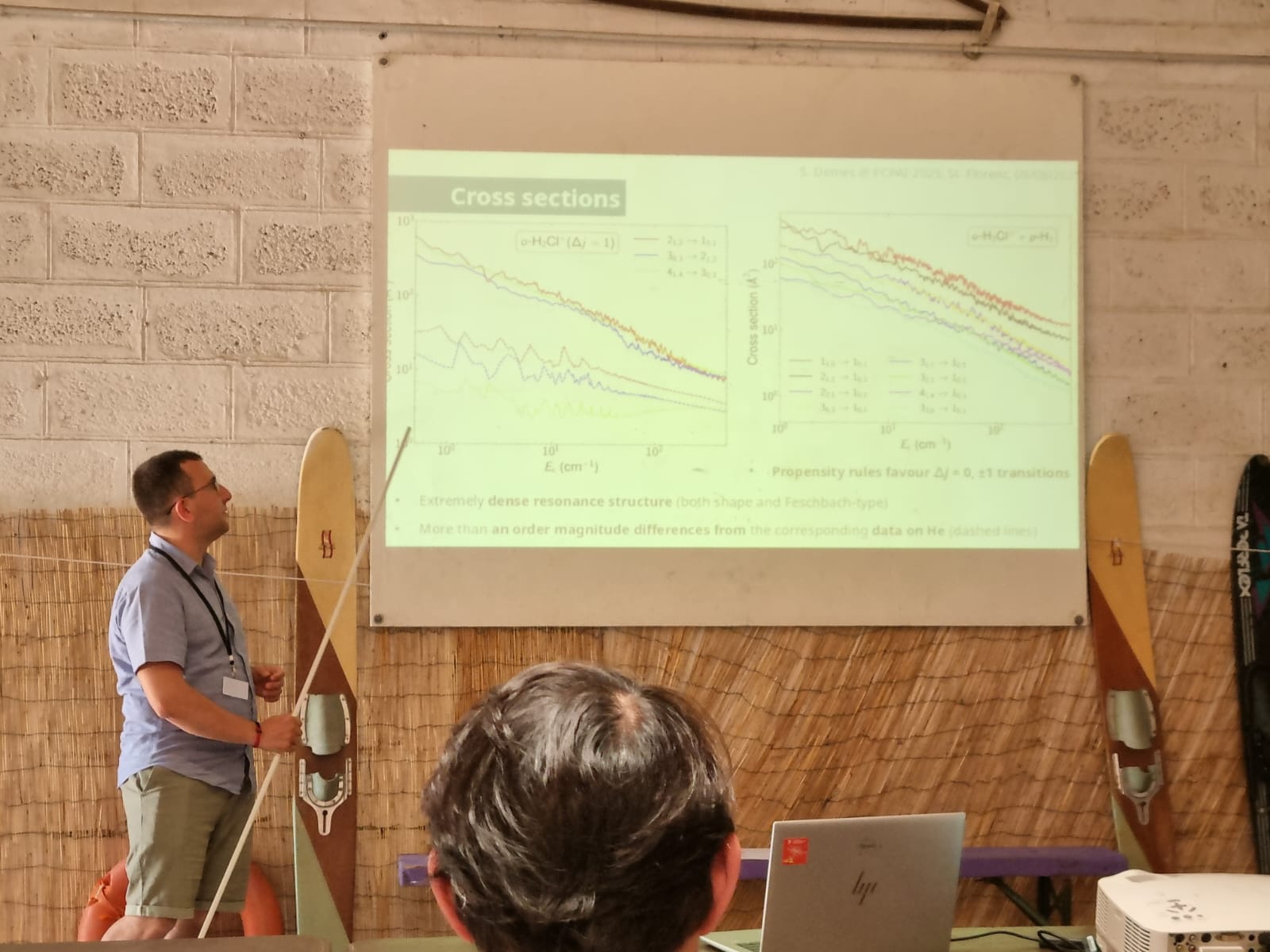
Collisional excitation of OH+ by molecular hydrogen: Toward modeling reactive systems in cold ISM - P. Pirlot Jankowiak, and F. Lique
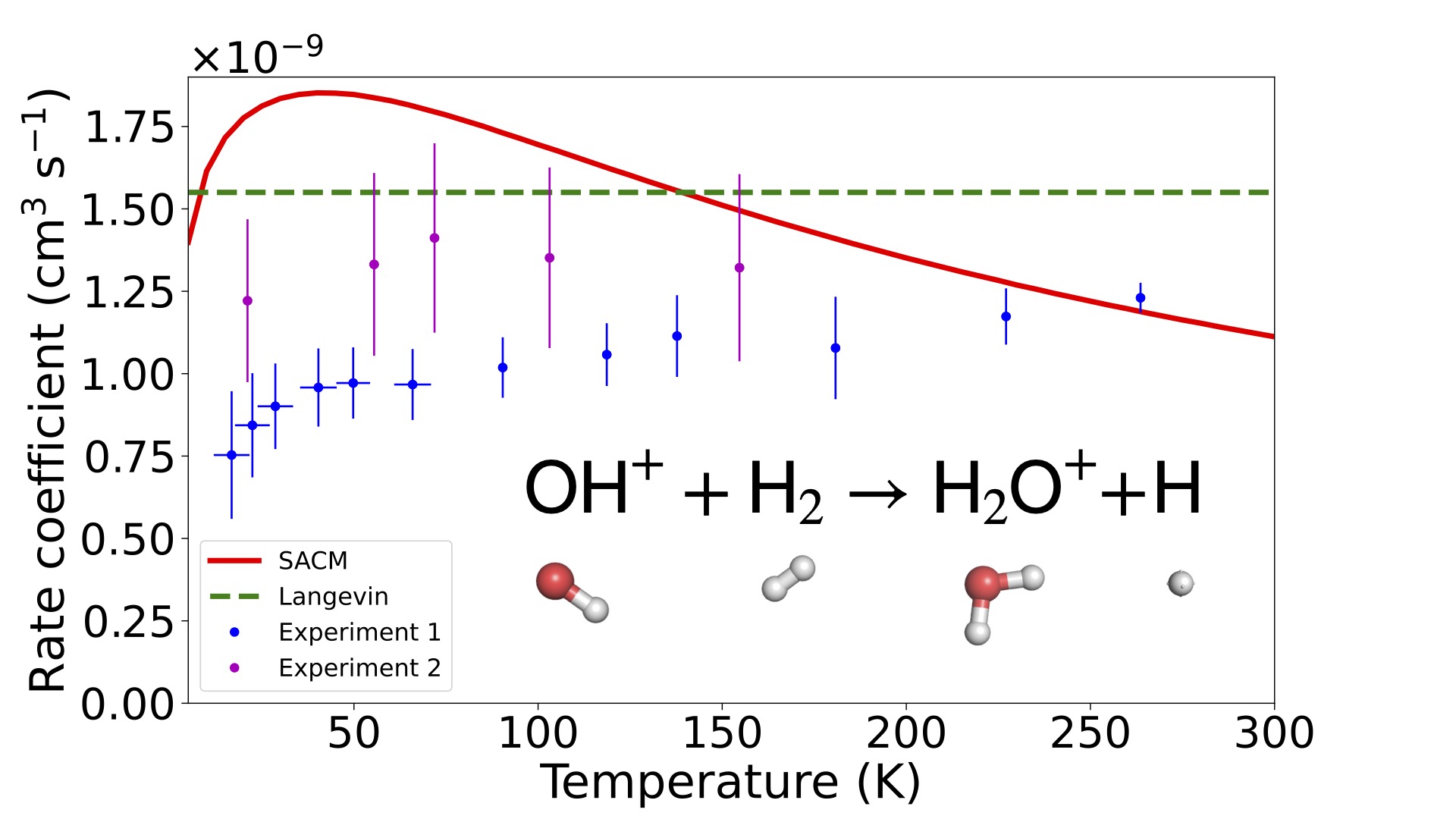
Understanding the interplay between inelastic and reactive processes in low temperature molecular collisions is a true theoretical challenge. This study addresses this challenge by employing the statistical adiabatic channel model (SACM) to quantify the rotational excitation processes in the OH+ + H2 reactive system, such process being key in astrochemistry. The SACM approach demonstrates very good agreement with reduced dimensional close-coupling calculations in describing pure inelastic collisions in the low energy regime and satisfactory agreement with experimental measurement for treating reactive processes. Hence, the SACM approach can be considered as a good alternative to consider molecular collisions in reactive systems characterized by strongly bounded intermediate complexes, in absence of exact calculation in the low energy regime. Our findings reveal that reactive processes dominate the pure collisional excitation at all temperatures studied (5–300 K) by at least about one order of magnitude. This suggests a strong revision of the predicted abundance of OH+ in astrophysical environments since astrochemical models are presently significantly overestimating the impact of OH+ excitation induced by H2 collisions.
Excitation of HC5N in collisions with H2 at high temperature - S. Gao, and F. Lique
For inelastic or reactive collisions between molecules, the quasi-classical trajectory (QCT) approach represents an efficient alternative to fully quantum-mechanical methods when the number of degrees of freedom becomes large or the temperature is high. The objective of the project is to use the QCT method to study molecular collisions at temperatures up to 3000 K. Such high temperatures are reached in astronomical environments such as the atmosphere of exoplanets and evolved stars. Understanding the chemistry in these environments relies on models based on rate coefficients for molecular excitation and reactivity, but these data are often lacking.
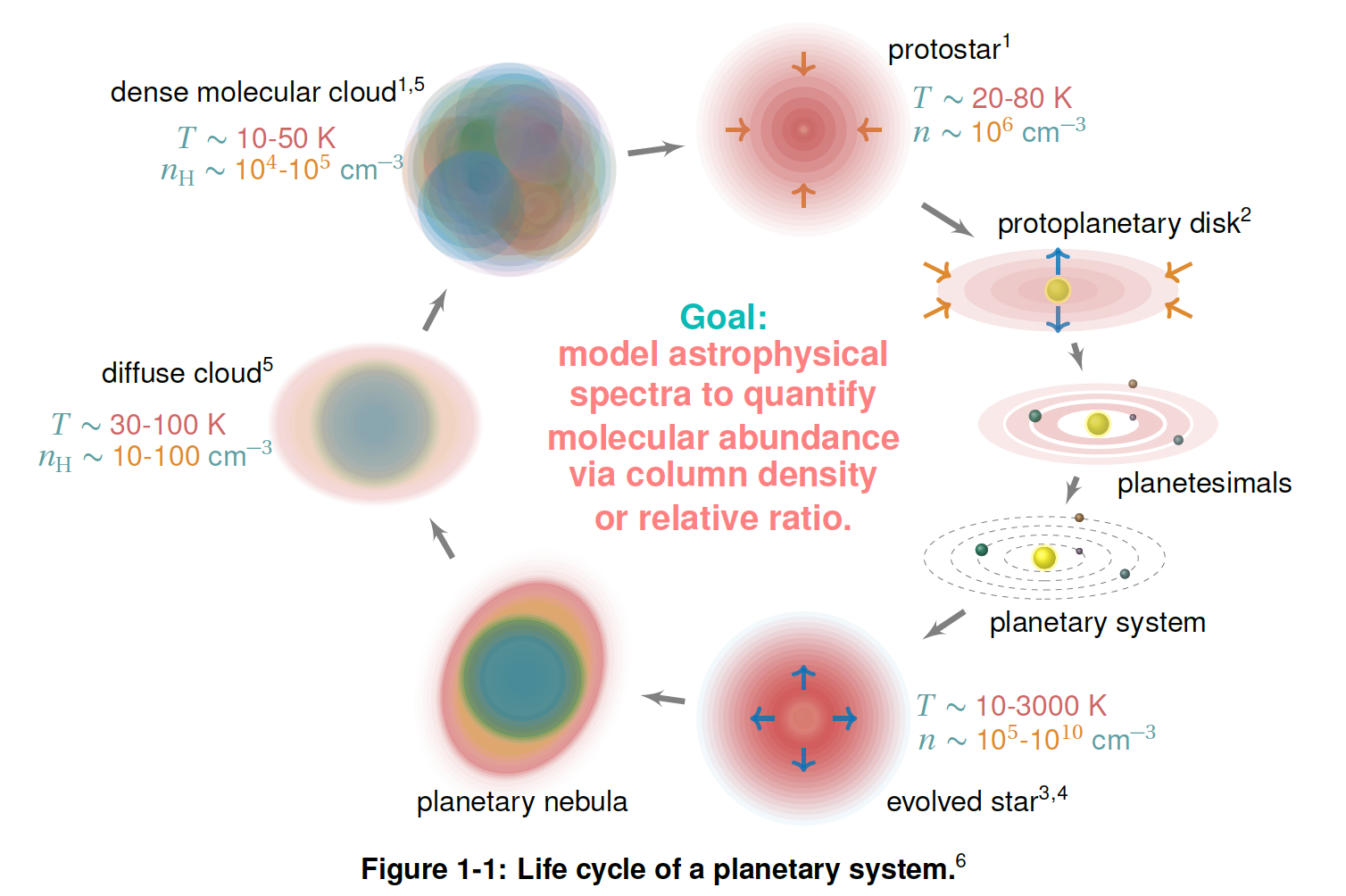
CS in cometary atmospheres - A. Godard Palluet, R. Dawes, E. Quintas-Sánchez, J. Kłos, D. Kędziera, A. Batista-Planas, and F. Lique
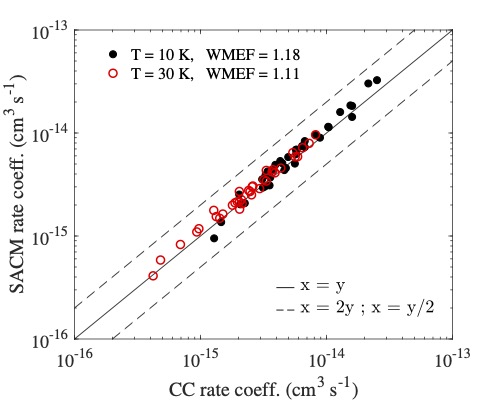
Comets are believed to have played an important role in the emergence of life on Earth. They are made of rocks surrounded by ices, mostly H2O, CO and CO2. To study their chemical composition, we are analyzing the molecular spectra of their atmospheres, formed by the sublimating ices as the comet approaches the sun. However, non-LTE excitation models are required for the analyzes as local thermodynamic equilibrium (LTE) conditions are not maintained.
These models account for the completion between energy transfer mechanisms. They include radiative processes, described by Einstein coefficients that are known for all detected molecules, and collisional processes, for which remain critically lacking because of their high computational cost. For cometary applications in particular, such data are available for only four molecules: H2O, CO, HCN, and HF.
CS is one of the most abundant sulfur-bearing molecules in comets, but its chemistry is still poorly understood and collisional data are lacking. Computing these data would allow its abundance to be accurately modeled and provide new insights into its chemistry [1].
Cometary atmospheres are mainly composed of H2O and CO, which are relatively heavy compared to H2 or He, commonly used in inter- stellar applications. Because fully quantum ap- proaches are not feasible for such systems, alter- native methods must be employed.
We explored the use of the Statistical Adia- batic Channel Model (SACM) approach to over- come the lack of cometary data. We stud- ied the CS-CO [2] and CS-H2O [3] collisional systems. We computed their potential en- ergy surface at the CCSD(T)-F12b/CBS and SAPT(DFT)/aVQZ level of theory, respectively. The SACM approach was employed for both sys- tem to produce rate coefficients from 5 to 30 K for CS-CO, and from 5 to 100 K for CS-H2O. The CS-CO SACM rate coefficients were compared to Close-Coupling (CC) rate coefficients, which is the exact way of solving the coupled equations. An excellent agreement was found, suggesting that the SACM approach is an efficient method to compute rate coefficients for heavy collisional systems.
References
[1] N. Biver et al. 2024 A&A 690 A271
[2] A. Godard Palluet, et al. 2025 JCP Comm. 162 241101
[3] A. Godard Palluet, et al. (to be submitted)
The Hibridon program package: What's new? - M. H. Alexander, P. J. Dagdigian, H.-J. Werner, J. Kłos, B. Desrousseaux, G. Raffy, and F. Lique
All the updates and improvements present in the new 5th version of the HIBRIDON software are presented.
Hibridon is a program package to solve the close-coupled equations which occur in the time independent quantum treatment of inelastic atomic and molecular collisions. Gas-phase scattering, photodissociation, collisions of atoms and/or molecules with flat surfaces, and bound states of weakly-bound complexes can be treated. From calculation of the S matrix, integral and differential cross sections, stereodynamic (alignment and steric asymmetry) cross sections, as well as more specialized quantities, such as transport and tensor cross sections, and cross sections between hyperfine levels, and photodissociation amplitudes can be obtained. The program is capable of treating closed-shell systems where the nuclear motion takes place on a single Born-Oppenheimer potential as well as open-shell systems for which the nuclear motion can evolve on several coupled electronic (Born-Oppenheimer) potentials.
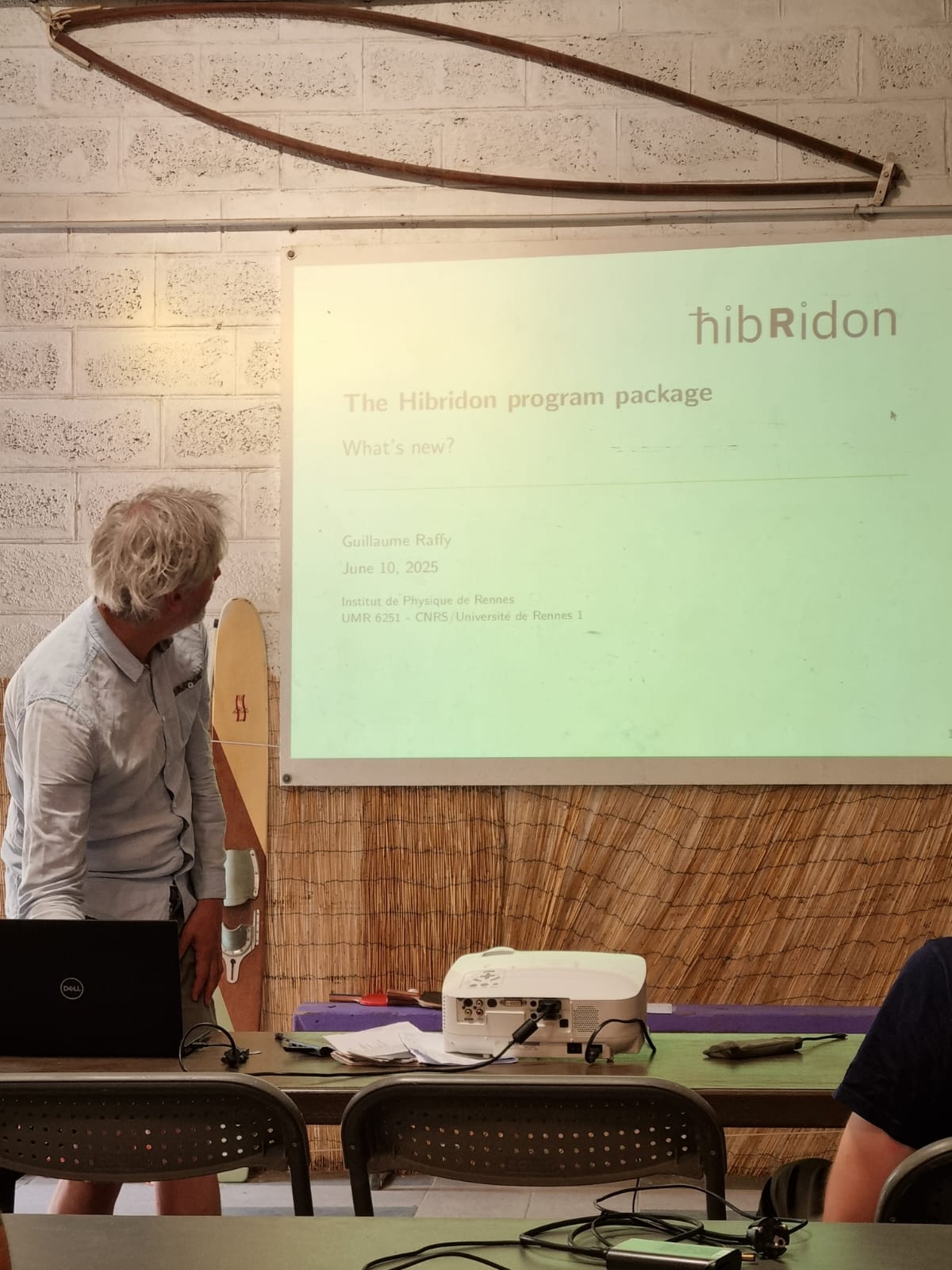
Computational tools to predict gas-phase reactivity in space: the reaction between CH3+ and C2H4 - F. Tonolo
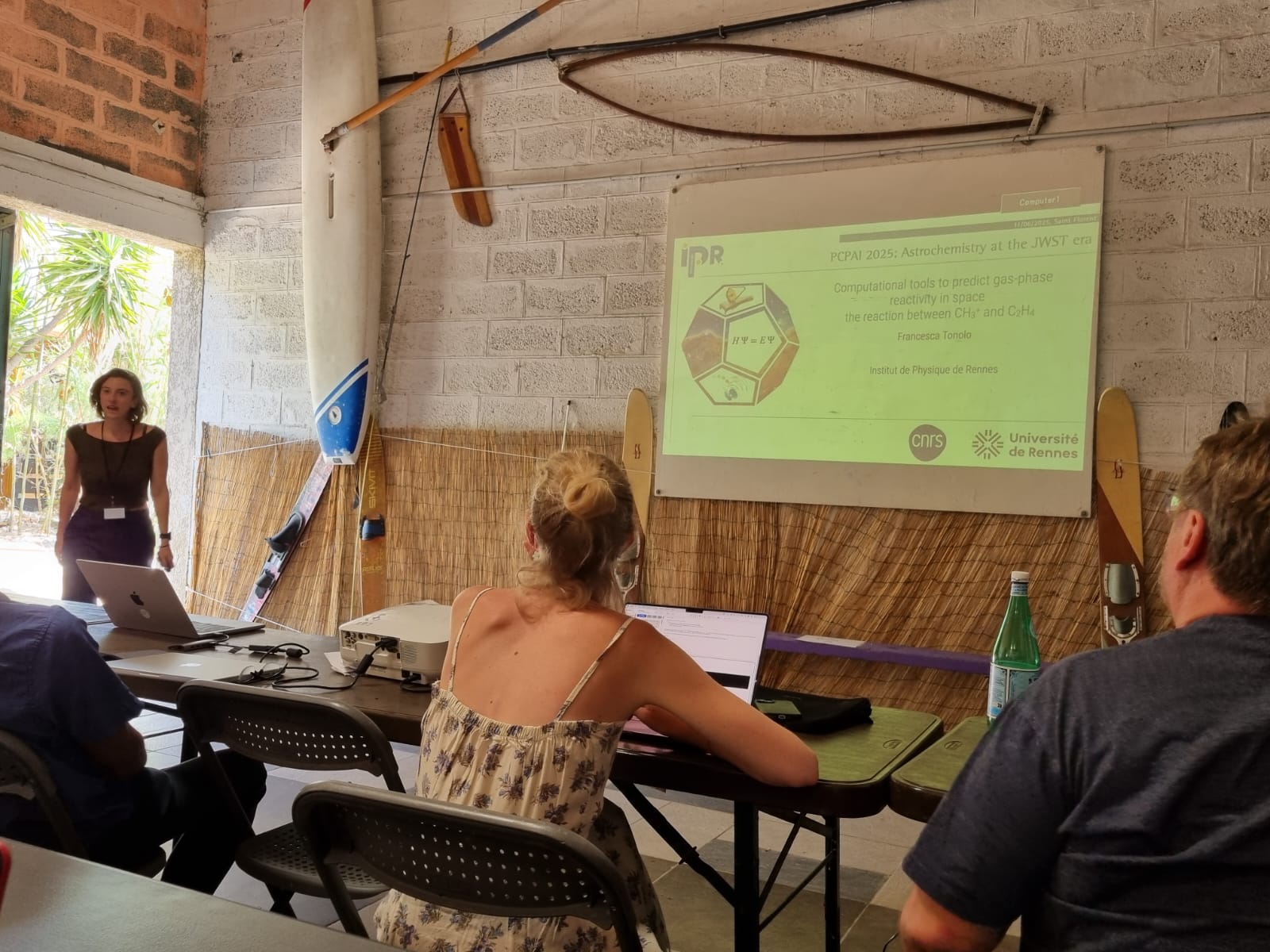
Although dust grains are well-established catalytic sites responsible for the formation of complex molecules, the vast majority of the ISM molecular content resides in the gas phase. Understanding how gas-phase chemistry contributes to the observed chemical complexity of space is therefore essential. To date, only a few experimental setups, mainly based on crossed molecular beam techniques or the CRESU apparatus, are capable of probing gas-phase reactivity under interstellar conditions. The extreme physical environment of the ISM, characterized by temperatures between 5 and 200 K and densities ranging from 10-4 to 107 cm-3, imposes severe constraints on chemical reactions and makes laboratory simulations challenging. In this context, computational chemistry plays a fundamental role. This talk presents four different applications of computational methods for gas-phase reactivity investigations: (1) explaining interstellar abundances through the calculation of molecular formation rates [1]; (2) predicting new molecular species in space by mapping possible reaction pathways [2]; (3) unveiling general chemical mechanisms [3]; and (4) supporting experimental determinations through theoretical validation (e.g., to guide a recent experimental investigation on the reactivity of CH3+ with methane and ethane to form complex hydrocarbons.).
References
[1] Tonolo et al., ApJ, 900, 2020
[2] Alessandrini et al., JCP, 154, 2021
[3] Puzzarini, FrASS, 7, 2022
Exploratory modeling in astrochemistry - A. Papaioannou, and M. Gueguen
Astrochemistry, similarly to other astrosciences, studies certain domains where the theoretical background can be lacking and observations can be sparse and uncertain, making it difficult to constrain model development. In these high-uncertainty fields, agreement between models and observations does not always indicate a genuinely representative relationship and models fail to provide exact understanding of the target system. In order to address these challenges, scientists have begun utilising a class of models and modelling approaches that are considered to be exploratory. Unlike traditional models that prioritise prediction and alignment with observations, exploratory models and approaches focus on deepening the understanding of the models and consequently the target system. These models and approaches are essential in enhancing our knowledge of astrochemistry; therefore, I will discuss how to distinguish them from predictive models, characterize their key features, and identify their role in the field.
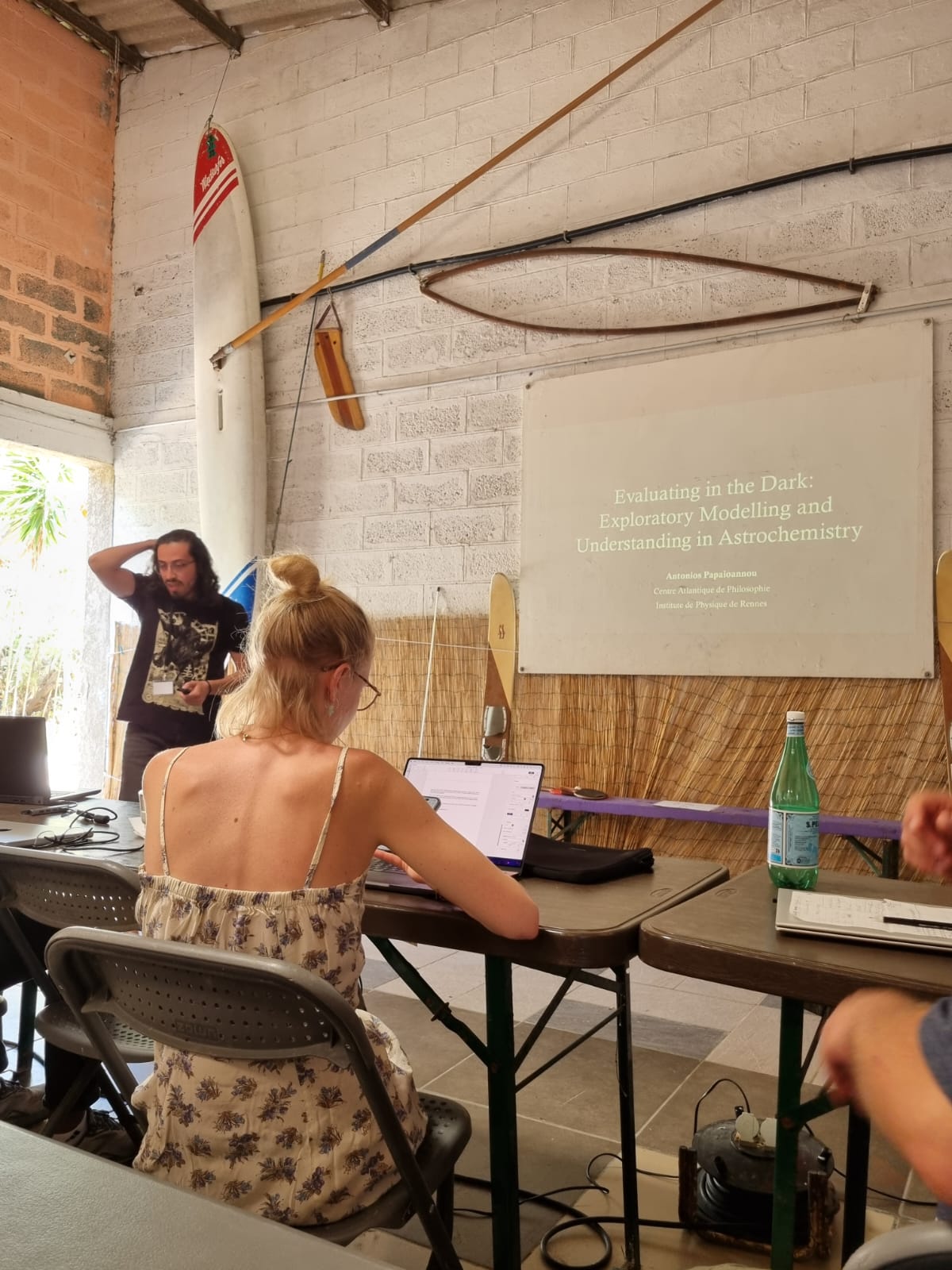
Collisional excitation of CH3CHO-He system - M. Żółtowski, and D. Kędziera
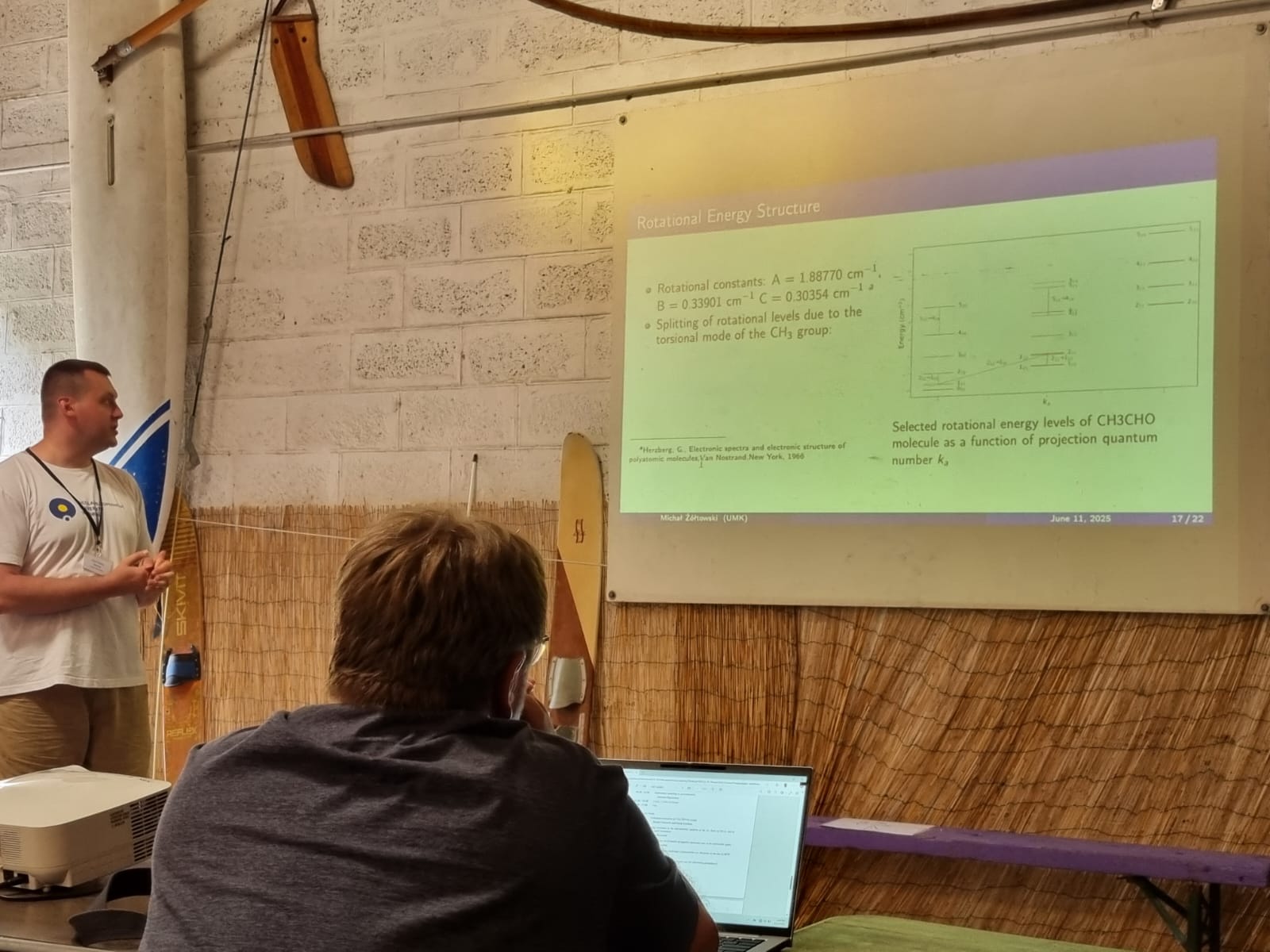
We report the first theoretical characterization of collisions between acetaldehyde (CH3CHO) and helium atoms. A new potential energy surface (PES) was constructed using the autoPES framework. The CH3CHO geometry was optimized at the CCSDT(Q)/CBS level of theory, and the interaction energies were computed at the SAPT(DFT)/aug-cc-pVQZ level for 1453 geometries. The resulting PES presents a well depth of −58 cm-1. Quantum close-coupling calculations were performed for the first 19 rotational levels of CH3CHO, providing rate coefficients up to 15 K. The computed cross sections exhibit clear propensities for Δj = Δkc transitions. These results represent the first set of collisional data for the CH3CHO–He collisional system and provide insights for non-LTE modeling of acetaldehyde spectra in the interstellar medium.